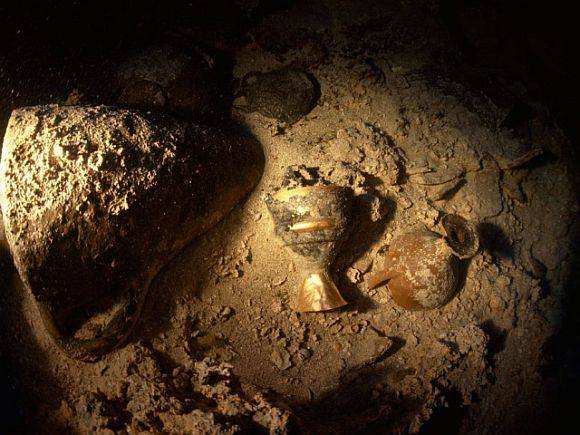Continued from “Famous treasure hunts in Indian history – Part 1
1739 AD – Diamonds of Golconda

Since times immemorial, India has been known for precious gems such as diamonds, which were prized for their size and beauty. India’s most prized diamonds were known as the “Golconda diamonds”, which were mined in the Hyderabad region ruled by the Qutub Shahi Dynasty.
Actually, Golkonda was the market city for diamond trade, where gems were brought from a number of mines to be sold. These diamond mines were located in Kollur (Guntur district) and Paritala (Krishna district) in the state of Andhra Pradesh.
Some of the most famous Golconda gems are:
- Koh-i-Noor Diamond (186 carat) – part of the British Crown Jewels, London
- Darya-ye Noor (182 carat) – part of the Iranian Crown Jewels, Tehran
- The Hope Diamond (46 carat) – displayed in the Smithsonian Institution, Washington
- The Great Moghul Diamond (787 carat) – Lost during Nādir Shāh’s invasion of Delhi
- The Pitt or Regent Diamond (410 carat) – displayed in the Louvre Museum, Paris
- The Orloff Diamond (300 carat) – displayed in the Diamond Treasury, Kremlin, Moscow
- Nizām Diamond (340 carat) – part of the Nizām’s Treasury, Hyderabad
- Jacob Diamond (186 carat) – part of the Indian government treasury
Sadly, out of these diamonds, only two remain in India. The rest were all looted during the Iranian king Nader Shah’s invasion of Delhi in 1739 AD. After the death of Emperor Aurangzeb, the Mughal Empire was crumbling with its nobles asserting their independence and the Marathas attacking from the south. At this opportune moment, Nader Shah attacked the empire and defeated the forces led by Muhammad Shah in the Battle of Karnal in February 1739 AD. Soon, Delhi was plundered and Nadir Shah left with the famous diamonds and the Peacock Throne or Takht-e-Taus.
1967 AD – Nizam’s Jewels

It is ironical that the fate that befell the Mughal Empire due to an invasion happened to its tributary state as well. Incidentally, this time the treasure hunt was carried out by the relatives of the king himself. Hyderabad ruled by the Nizams was the largest princely state during the British Raj before it was merged into the Indian union in 1948. Carving their kingdom in South India from the ruins of the Mughal Empire, the Nizams amassed such wealth in seven generations that the last Nizam was titled as the richest man in the world.
The last and seventh ruler of Asaf Jah dynasty, Mir Osman Ali Khan, was known for his stunning collection of jewellery. Mir Osman Ali Khan’s collection included 25,000 diamonds, turban ornaments, necklaces, earrings, armbands, bracelets, belts, cuff links, anklets, rings, pearls the size of quail eggs and the famed Jacob’s Diamond.
In 1967, Mir Osman Ali Khan died and immediately a feud over his vast property ensued among his 149 descendants. The Government of India stepped in when things went out of control. However, much of the Nizam’s jewellery collection was already looted by the time. It is stated that the aged Nizam never allowed any audit of his jewellery collection and ensured that the dust settled on his collection is not cleaned, so that the glitter never hits anyone’s eyes! The total worth of 173 jewellery pieces (a fraction acquired by Government of India) is worth Rs 5,000 crore today!
15th Century AD – Sunken Portuguese treasures

The Portuguese came to India in search of spices and precious gems in early 15th Century and settled in Goa. Soon, Goa grew into a large trading centre, and a diamond-trading route was established from Goa to Lisbon, Portugal. Many ships stopped over in Goa on their way to other Portuguese colonies such as Malacca (Malaysia) and East Indies (Indonesia). Between 1497 AD and 1650 AD, there were 1,033 departures of “Portuguese India armadas” from Lisbon for the Carreira da Índia (“India Run”). Organized by the Portuguese crown, these armadas were fleets of ships that were dispatched on an annual basis from Portugal to India.
Around 66 ships of Portuguese India armadas were lost in ship wrecks during between 1497 AD and 1612 AD. One of them was the Sao Jose, which was on a King’s mission to transport royal treasure to Goa. Travelling with the fleet was Francisco da Gama, the great grandson of Portuguese explorer Vasco da Gama, en route to Goa, to reign as the Viceroy. Attacked at sea by English and Dutch ships, the Sao Jose and da Gama’s royal treasure were lost off the Mozambique coast.
Another famous ship was the Flor do Mar, which was, at 400 tons size, the largest carrack built of its time. It was built for the Portuguese India run in 1502. Under the leadership of the great Portuguese general, Afonso de Albuquerque, the Flor do Mar supported the conquest of Goa in 1510 and Malacca in 1511. However, while returning from the conquest of Malacca, laden with a large treasure trove of around 60 tons of gold, the ship was lost off the coast of Sumatra. Although these ships have not been found, the National Institute of Oceanography has found a similar sunken Portuguese ship off the coast of Goa laden with ivory and gold.
Factfile –
http://en.wikipedia.org/
http://www.allaboutgemstones.com
http://photography.nationalgeographic.com
http://www.sunkentreasure.com
http://drs.nio.org
http://forbesindia.com
http://www.25karats.com






Very interesting.